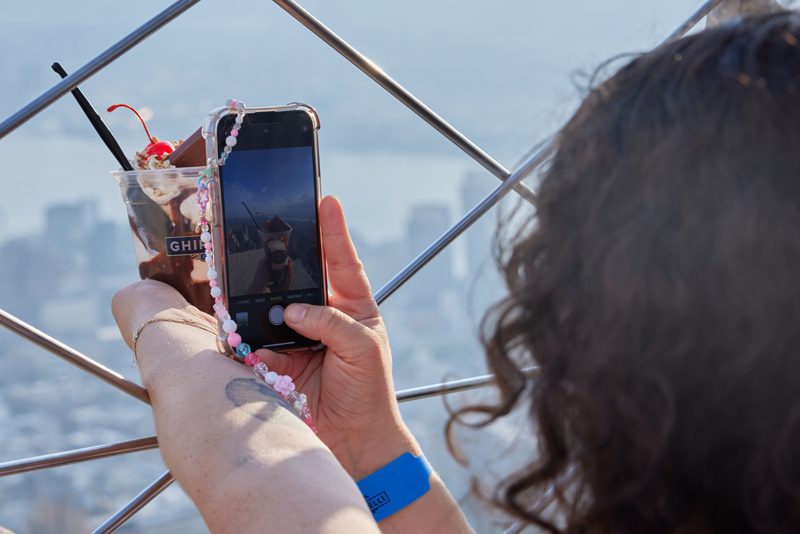I love the quote, “There are two kinds of people: Those who talk a lot and those who don’t listen.”
There are also two kinds of marketing that apply directly to consumer promotion. You’ve heard all of the marketing derivatives – co-marketing, relationship marketing, one-to-one marketing, guerrilla marketing, ambush marketing, mass marketing, targeted marketing. I’m dumping all of these into two groups. The way we see it, there’s “content” marketing and “context” marketing.
Content marketing in its simplest form is the classic Procter & Gamble method – features and benefits, price and package. Here’s what my brand is, here’s what it does, here’s why it’s good. The approach is more of an “offering” than anything. I have a better mousetrap, beat a path to my door. One might even say it’s introspective.
In focus groups, the questions asked about content are: Why do you use this product? How well does it work? To whom would you recommend it? Are there other possible uses? What are the substitutes?
Yeah, the world has changed. But there are still numerous examples of content marketers. Duracell’s new and supposedly improved battery advertising is all about the battery’s functionality. Gillette (which owns Duracell) is, in the end, a content marketer. The premise of their new Mach 3 razor itself is strictly content-based. Mach 3 will do well because it offers a smoother, closer shave (content), which Gillette’s marketing proves via sampling. There are samples going to every male over the age of 10 in the U.S.
I’d even classify the local car dealers as taking a content approach by shouting their smarmy deals and terms at us in tasteless TV commercials. These guys offer everything but context (unfortunately, the content often leaves a lot to be desired).
Back in the good old days of content marketing, we did “laddering” to climb up the rungs from tangible attributes to the higher-order benefits. Climb the ladder high enough and you lose sight of the content and enter the world of context.
The surreal sell You know these marketers – from the very sublime Infiniti launch (Remember the rocks and trees?), to Nike and Coke. Now banks and even the Government (i.e., Be All You Can Be in the Army) don’t sell themselves as much as they try to paint a surreal picture. The message is, “we know you and you should trust us because we fit nicely into your lifestyle.”
Context marketing is much more in vogue right now. It isn’t about the features and benefits of the product or service, it’s about having a relationship or projecting a lifestyle. The message is more one of relevance and fit. Some would say that the context transcends the content.
The latest promotion marketing buzzes (co-marketing and relationship marketing) fit in here. For co-marketing, “Buy Tide at Target” supposedly helps both the brand and the retailer by being more relevant to the consumer. Since grocery shopping is part of the consumer’s lifestyle, placing your brand in that context makes it more relevant. One small problem is that most people hate grocery shopping. The shopping context is inherently transactional, which isn’t very appealing.
The real co-marketing opportunity is to get manufacturers and retailers to work together to make shopping a more enjoyable experience, so the focus should be less on media vehicles and more on the in-store environment. Being part of a jumbled, confusing array on the shelf is not a compelling context.
Relationship marketing is the “let’s open up a dialogue with our consumers by being more meaningful” approach. Again, the shortcoming is that the context is usually not motivating, but invasive.
So what’s the best marketing approach for promotion, content or context? The punchline is that promotion is the best bridge between the two. With promotion, the marketer can provide the proper context for the target audience while also reinforcing the product’s content.
Think about sampling, the classic content marketing promotional tool. When a cosmetics manufacturer is sampling at concert tours, that’s a perfect context for its audience. Why didn’t Snapple’s Summer ’96 sampling blitz work? It was generic and provided no context for the brand.
Other promotional examples we’ve seen that bridge content and context:
* MinuteMaid’s Win an Orange Grove in Florida brought home the brand’s attributes.
* Crystal Light’s Do What You’ve Always Wanted promotion let consumers pick their own prizes.
* M&M Mars’s search for the gray M&M made eating the product a game.
* DeBeers’s Guess Who’s Wearing the Necklace? created a buzz over the identities of celebrity silhouettes.
* Lexus’s sponsorship of Eric Clapton’s tour draws metaphors between the car and the god of guitar.
Each of these promotions reinforces the brand’s content while also providing a positive, brand-building context. So, make sure your promotional marketing plan clearly articulates the brand’s content and the context, and the role of each.
 Network
Network

